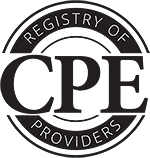This course provides an overview of common fraudulent practices aimed at inflating revenue and earnings, as well as manipulating expenses. It examines the tactics used by some companies to misstate revenue, manage earnings artificially, and underreport or misclassify expenses. Understanding these fraudulent schemes allows auditors to better identify signs of manipulation.
Chapter 1: Revenue and Earnings Manipulation - Overview
This chapter provides an overview of common methods of manipulating revenue and earnings, which can mislead stakeholders and distort financial statements. It covers inflating earnings through non-recurring items, overstating deferred revenue, backdating transactions, and using fraudulent journal entries.
Chapter 2: Expense and Liability Fraud - Overview
This chapter examines fraudulent activities that involve understating expenses and liabilities to create a false financial picture. Topics include misclassifying financial statement items, improper use of reserves, misrepresenting lease classifications, and structuring transactions to avoid regulatory thresholds.
Prerequisites
No advanced preparation or prerequisites are required for this course.
Learning Objective
- Identify common methods of manipulating revenue and earnings in financial statements.
- Recognize indicators of inflating earnings with non-recurring items and overstating deferred revenue.
- Discover and distinguish between legitimate and fraudulent journal entries .
- Recognize indicators of backdating transactions and how they can impact financial reporting.
- Identify fraudulent activities that involve understating expenses and liabilities in financial statements.
- Recognize common schemes for misclassifying financial statement items and manipulating reserves.
- Discover and distinguish between legitimate and fraudulent lease classifications under accounting standards.
Last updated/reviewed: January 31, 2025



Ask the instructor a question about this lesson